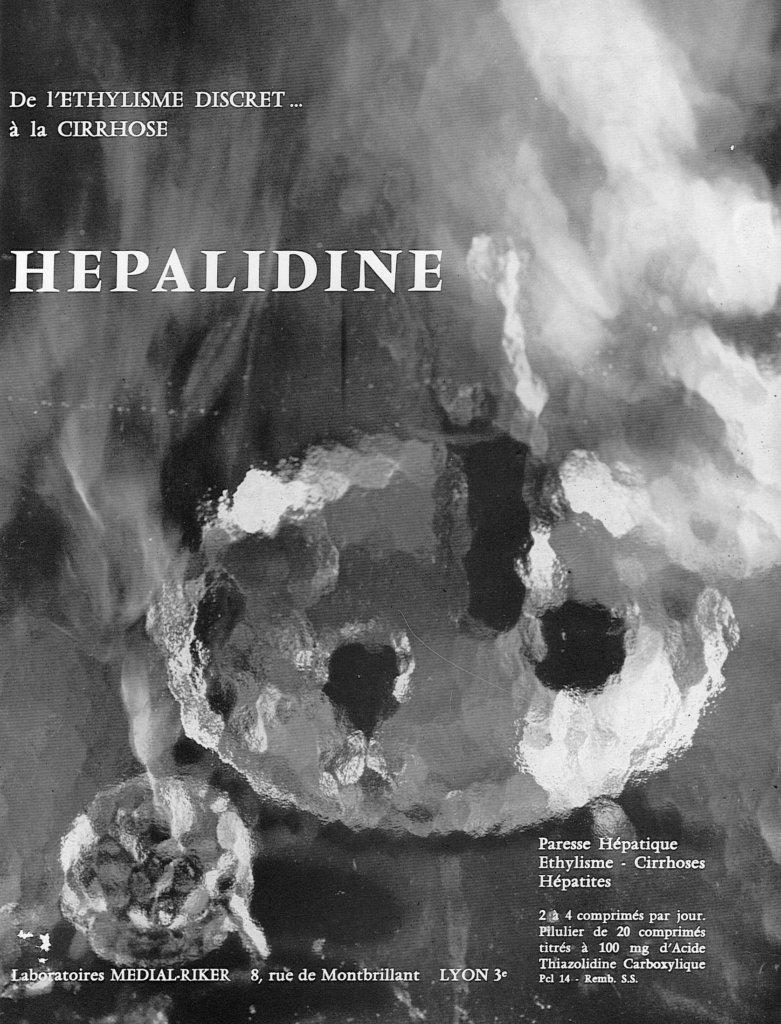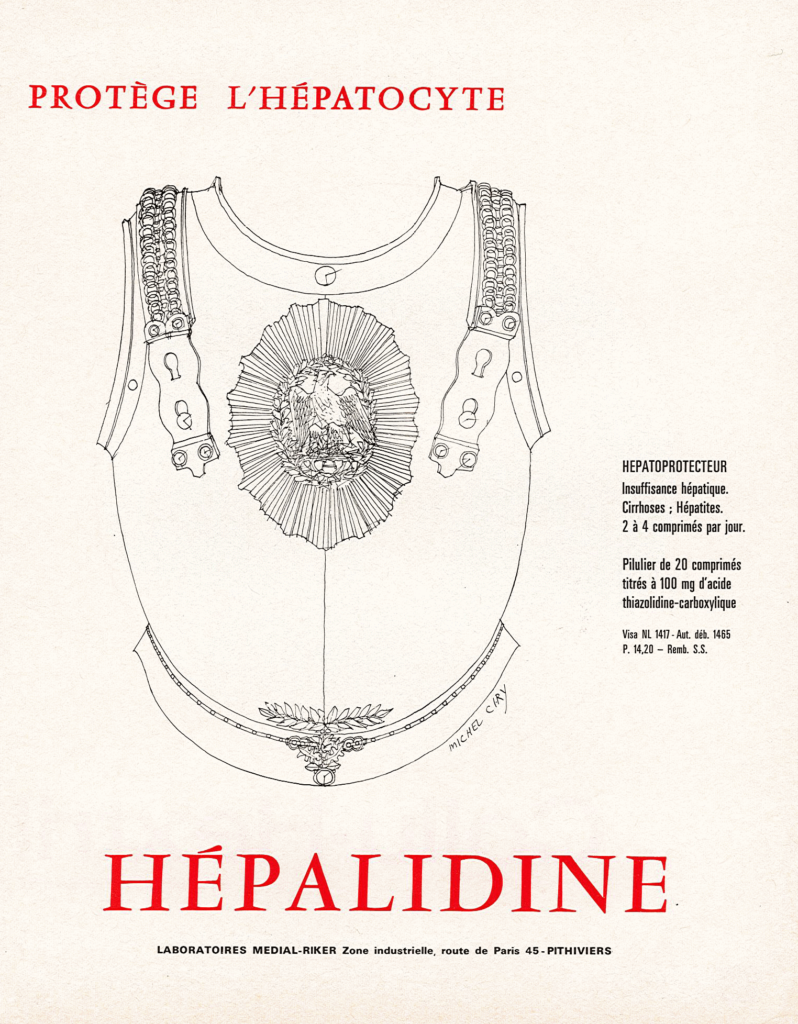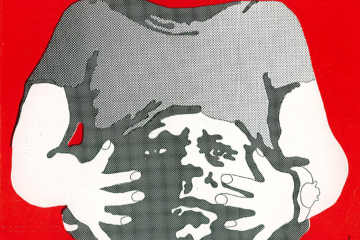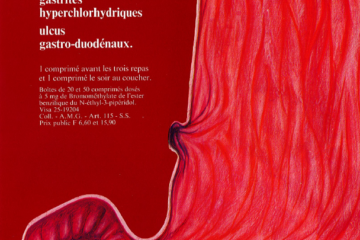The active principle of Hepalidine® is 1,3-thiazolidine-4-carboxylic acid (TCA) which is a cyclic sulfur amino acid known for its anti-toxic effects, particularly on the liver. TCA is a proline analogue (also designated L-thioproline or thiaproline) and a cysteine-conjugated metabolite of formaldehyde. In other words, it is an adduct of L-cysteine with formaldehyde. It is a potent antioxidant compound, useful to attenuate cellular oxidative stress. The drug was used to protect hepatocyte and thus to treat liver diseases and related gastrointestinal disturbances. « From discrete ethylosis to cirrhosis » as mentioned on one of the advertising. Each tablet contained 100 mg of TCA, an active ingredient extensively used as a protecting agent in the 1970s to treat acute and chronic hepatic and biliary disorders. But cases of accidental overdosage and intoxication were reported. The drug was withdrawn from the market in 1982 in France.
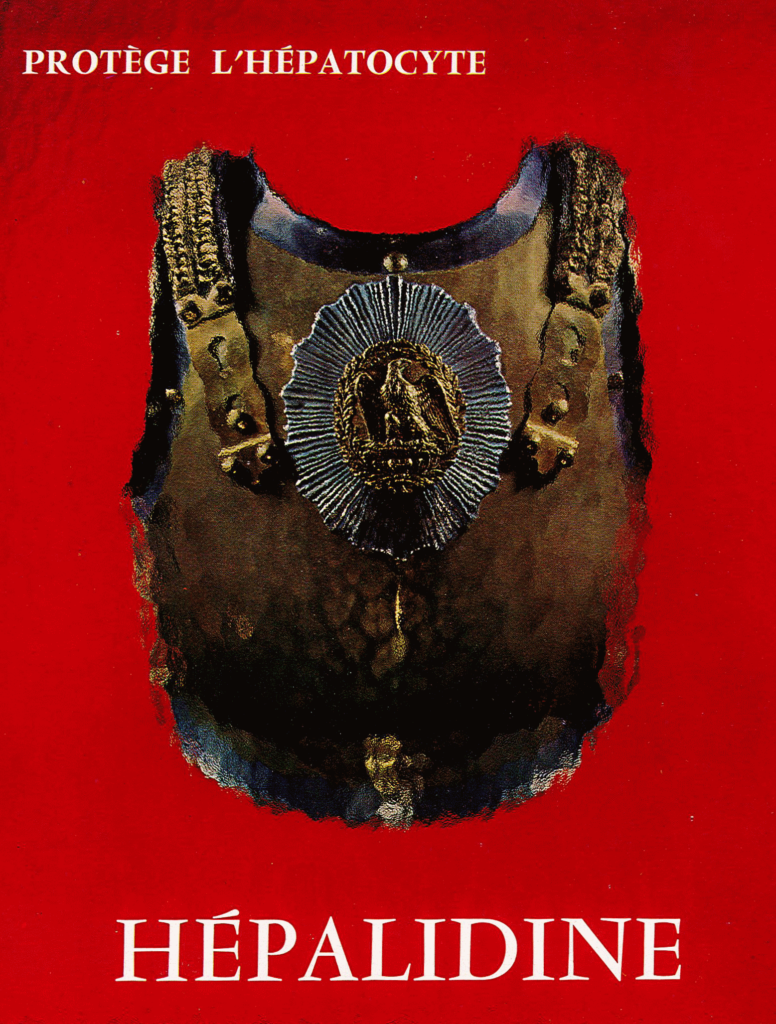
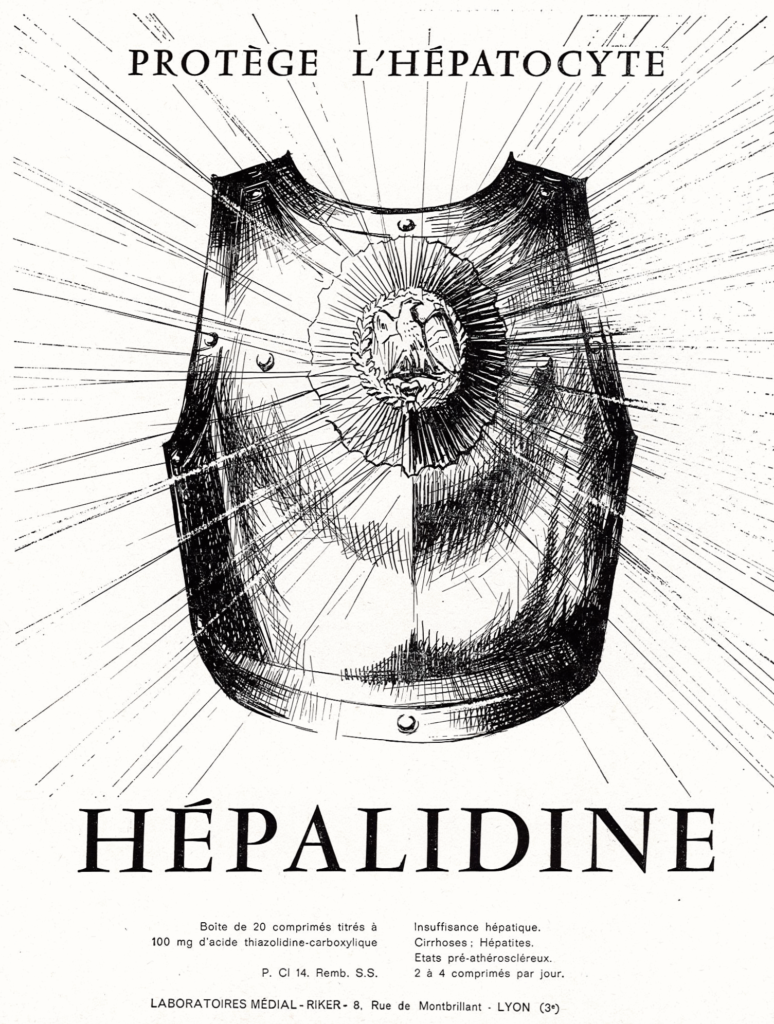
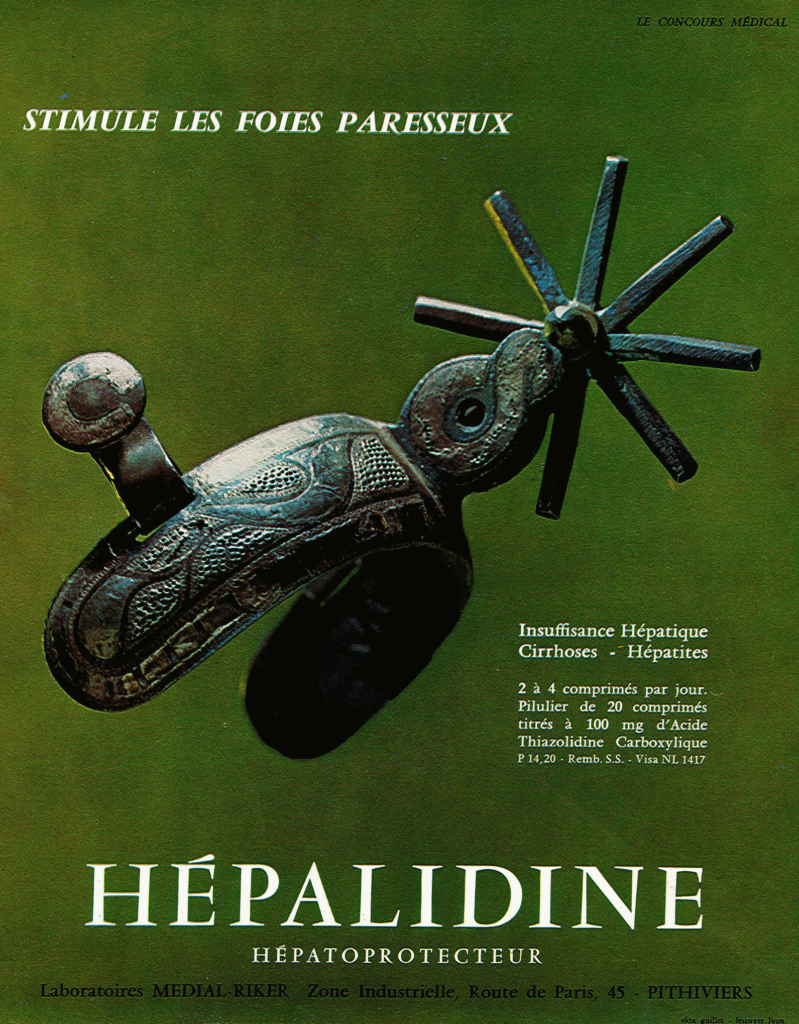
The drug advertising strategy was based on the capacity of the drug to protect and to stimulate the liver. A nice picture of an armor of a Roman soldier served to illustrate the protecting aspect, whereas the spur used for horses provided a pictural view of the stimulation aspect. The idea was to « stimulate the sluggish liver » as indicated on one of the advertising supports.
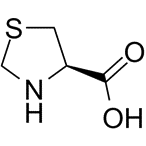
L-thioproline (or thiaproline)
